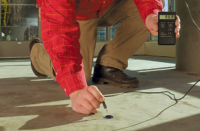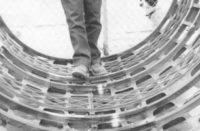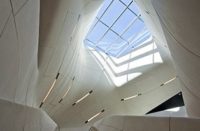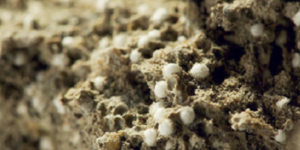Green building has been making a lot of headlines lately — it seems as if you can’t turn on the TV, read a magazine or attend a conference without hearing about it. You have probably heard the buzz about LEED and wondered how this building rating system applies to you. Green building is the next step for the decorative contractor industry, and LEED will help you and your business take that step.
The LEED (Leadership in Energy and Environmental Design) Green Building Rating System is a voluntary building certification program developed by the U.S. Green Building Council, a nonproflt comprised of members from many sectors of the building industry. The LEED System established a common benchmark for what constitutes a “green” building. It evaluates a building in five categories: Sustainable Sites, Water Efficiency, Energy & Atmosphere, Materials & Resources and Indoor Environmental Quality. Within these credit areas, points are available, and the number of points a project earns determines the level of certification the building will be awarded. The four progressive levels of certification are Certified, Silver, Gold and Platinum.
Concrete is a versatile material, can be incorporated into many aspects of the building design and construction, and will help contribute LEED points to a project that is looking for LEED certification. Decorative contractors can play an important role in a LEED project because of their mastery of concrete.
Materials and resources are one of the aspects of the building that LEED evaluates, and materials which contain sustainable or recycled materials, or that are manufactured within regional facilities, can earn points towards LEED certification.
Hauling materials from distributors, factories and other facilities onto the job site is a drain on natural resources and a contributor to poor air quality and pollution. Using concrete and other materials that are extracted and manufactured within 500 miles of the project site reduces the environmental impacts resulting from transportation and also helps support a local economy.
LEED encourages the reuse of materials and products within a project and promotes the use of materials that are made of recycled content in order to reduce the demand for virgin materials and reduce waste. By using concrete that contains certain sustainable materials, a decorative contractor can help a project earn points towards LEED certification. For example, asphalt concrete should be comprised of recycled content, and rubberized asphalt should be made of crumb rubber from scrap tires. The asphalt should also contain pre-consumer or post-consumer asphalt roofing shingles.
Portland concrete pavement should include recycled materials, such as coal fly ash, ground granulated blast furnace slag, rice hull ash, silica fume, or other pozzolanic industrial byproducts, and contain reclaimed concrete material aggregate.
Water management is another important aspect of LEED, and projects can earn points by incorporating strategies that manage storm water. One strategy is to use porous concrete. Also, storm-water volumes can be collected from hardscape surfaces, including the roof, and be used in the landscape irrigation system. The purpose of storm-water management is to limit the disruption and pollution of natural water flows by managing runoff.
Using concrete can reduce the use of materials with potentially harmful contaminants and can also cut down on the need for finish materials, which often contain hazardous pollutants.
As the popularity of green building continues to grow, decorative contractors with knowledge and experience with green building design and construction will be highly sought after by building owners and facility managers who wish to achieve LEED certification.
To learn more about the U.S. Green Building Council and LEED, please visit
www.usgbc.org.















